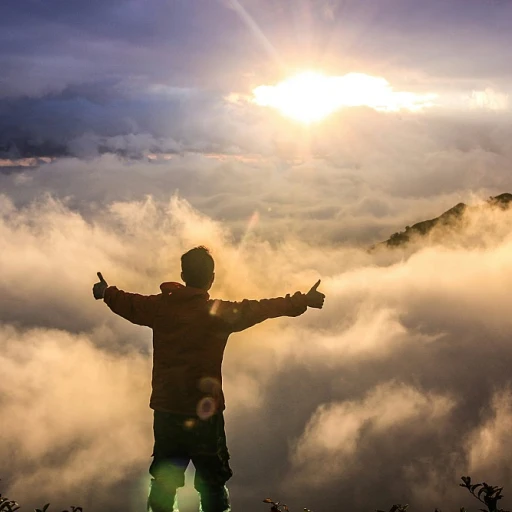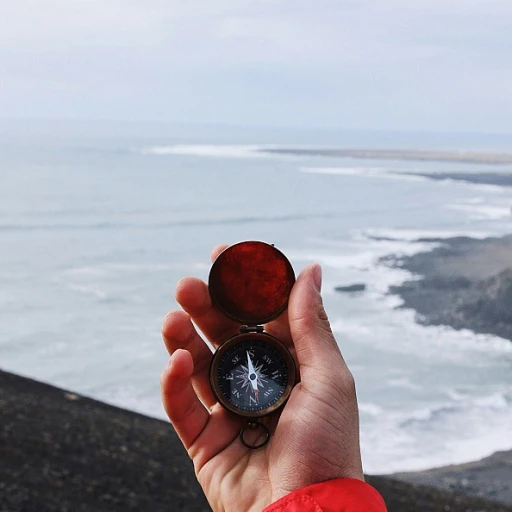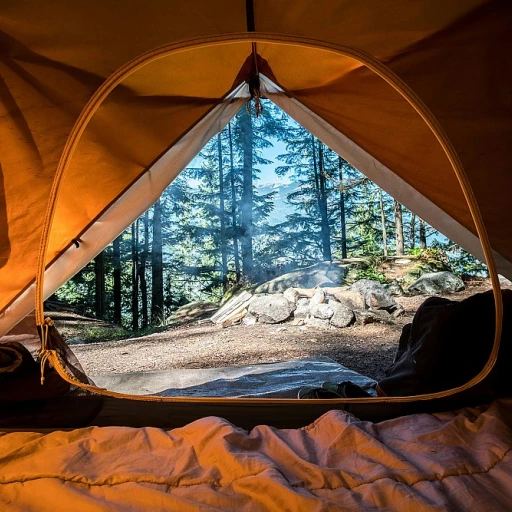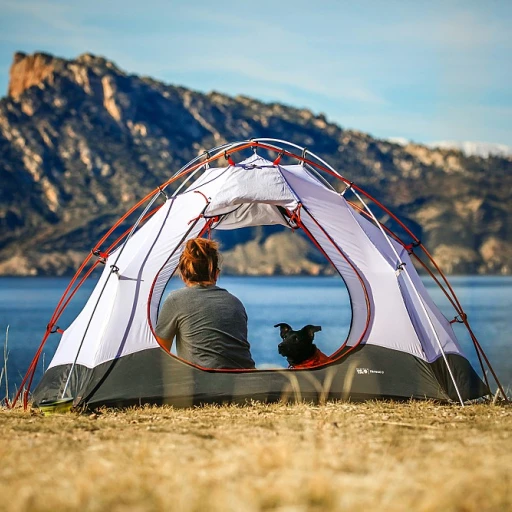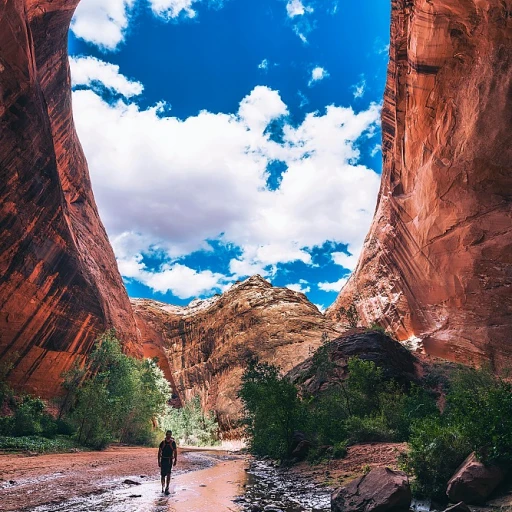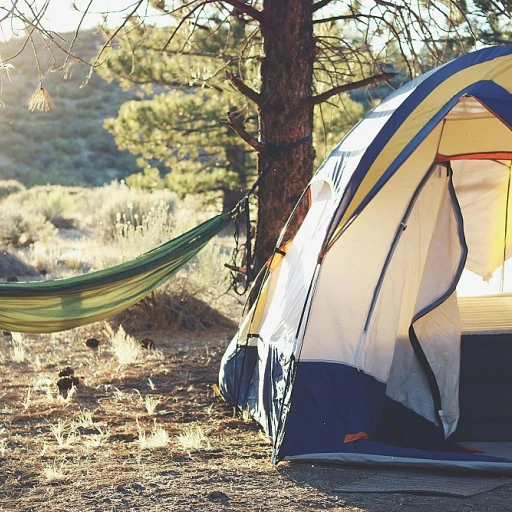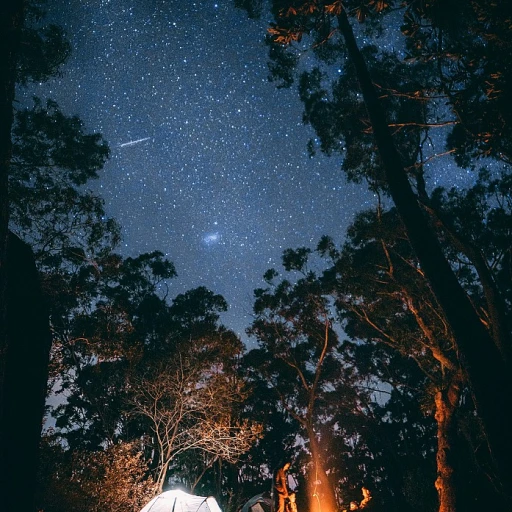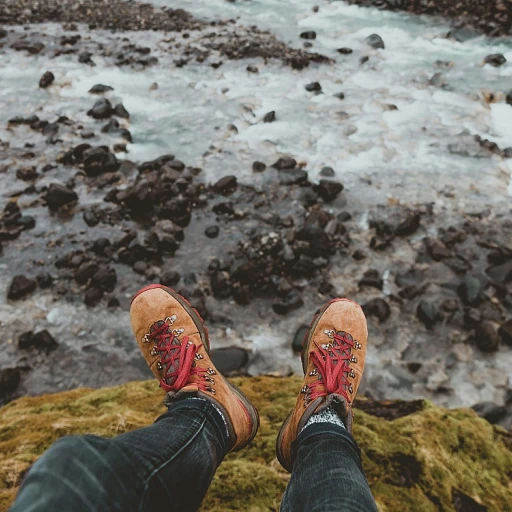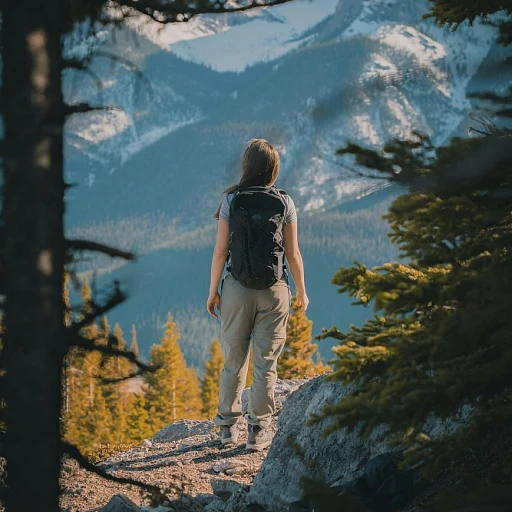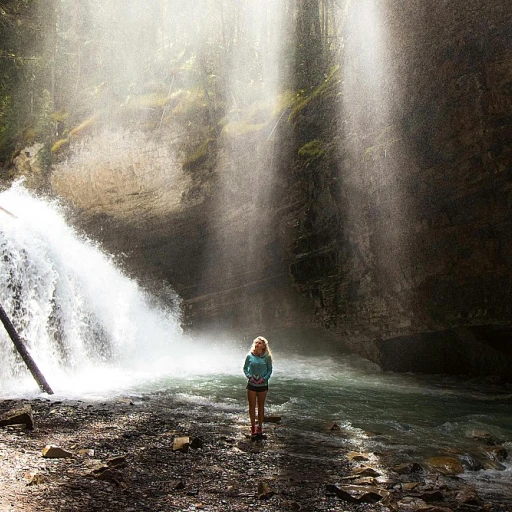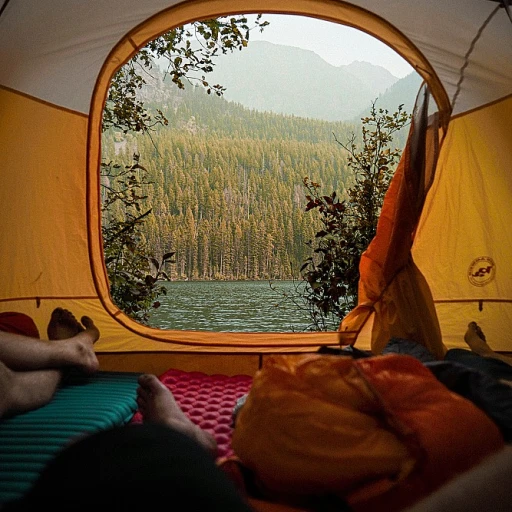
Yosemite's climate: what to expect throughout the year
Typical climate patterns in Yosemite National Park
Yosemite National Park, located in California, showcases a diverse climate owing to its varying elevation levels. Understanding these patterns can help you pack appropriately and plan your hike with confidence. The National Park Service notes that Yosemite's climate is heavily influenced by its mountainous terrain and seasonal shifts.Spring: a mix of warmth and freshness
Spring in Yosemite sees temperatures gradually warming up, with daytime highs ranging from 53°F to 79°F (12°C to 26°C). Snowmelt from the High Sierra Camps often swells the Merced River, painting a picturesque scene. However, hikers should be prepared for occasional rain showers and chilly, clear nights. Humidity can also vary but generally remains comfortable. If you’re planning to visit Yosemite Valley during this time, expect fresh blooms and animated waterfalls.Summer: basking in the sun
Summers in Yosemite are characterized by consistent sunny weather, with average high temperatures between 70°F and 90°F (21°C to 32°C). This is the ideal period for day hikes and enjoying the breathtaking landscapes. Nights are clear and can be pleasantly cool, making it perfect for stargazing. Winds primarily come from the southwest (SSW) ranging between 5 to 15 mph (8 to 24 km/h). The humidity level is typically low, reducing the risk of discomfort from high temperatures.Autumn: the hue of changing leaves
Fall brings a vibrant spectrum of colors to Yosemite as the leaves change. The weather remains relatively mild, with temperatures in the day ranging from 49°F to 79°F (9°C to 26°C). Although rainwind events become more frequent as the season progresses, sunny days still dominate. The nights become clearer, but hikers should prep for cooler, low winds and waxing gibbous moon phases that brighten the trails.Winter: embracing the cold and beauty
Winter in Yosemite is marked by significantly lower temperatures, ranging from 28°F to 50°F (-2°C to 10°C). Snowfall is common, especially in the higher elevations, transforming Yosemite into a winter wonderland. Key trails may require gear like crampons or snowshoes. Night skies can be particularly clear, providing splendid views of a waning gibbous moon or other moon phases. High winds, predominantly from the southwest (SSW), can sometimes pose challenges. For those looking for cozy accommodation amidst nature's glory, autocamp Yosemite is a fantastic choice. Yosemite’s dynamic weather patterns create a unique experience for every visit. By understanding these patterns, they can make any hike more joyful and safe!Sunny days in Yosemite: how to make the most of clear skies
Seizing the sunny days
There’s nothing quite like the feel of the Yosemite sun on your face when you’re out exploring. A clear sky is a hiker’s best friend, and Yosemite National Park is blessed with plenty of these days. With an average of 267 sunny days per year, as reported by the National Park Service, it's not hard to find the right moment to hit the trails.
The temperature can vary, but generally, you’ll find it in the comfortable 60s to 70s (Fahrenheit) during the day, ideal for a trek through the Yosemite Valley or up to the High Sierra Camps. A key tip is to start your hikes early to beat the midday heat and enjoy the best weather in Yosemite.
Benefits of clear skies
Sunny days mean less humidity, which makes for a more comfortable hike. Lower humidity levels keep you from feeling sticky and reduces the risk of dehydration. However, always pack sufficient water, as staying hydrated is critical.
Sun protection tips
Don’t forget about sunrise and sunset views, which are spectacular in Yosemite. Watching the sun set behind Half Dome is an unforgettable experience. To make the most of these moments, bring a good camera and some patience. These magic hours also offer a break from the midday heat, letting you hike in cooler conditions.
For night hiking under a clear sky, consider the moon phases. A waxing gibbous moon provides ample light, making it easier to navigate the trails.
Don't miss out on these clear nights – they’re perfect for stargazing and truly appreciating the park’s natural beauty.
Dealing with wind in Yosemite: safety tips and trail recommendations
Wind patterns: crucial aspects to understand before hitting the trail
Based on data from the National Park Service, winds in Yosemite vary significantly depending on the time of year and the specific region within the park. For example, the popular Yosemite Valley often experiences mild, SSW winds at an average speed of 5 to 10 mph. However, the High Sierra Camps and Tuolumne Meadows can face stronger gusts, with speeds reaching up to 20 mph or more.
Wind arrows and their significance on trail difficulty
Observing wind arrows on weather maps helps hikers gauge the direction and intensity of the wind. South-southwest (SSW) and east-northeast (ENE) wind arrows indicate prevalent patterns in Yosemite. These indicators can help decide whether to embark on a hike in areas such as the Merced River or opt for more sheltered paths during high wind conditions.
Navigating windy trails: safety tips and recommendations
High winds can pose serious risks, especially in exposed areas like the Upper Yosemite Falls Trail. To ensure safety, always check official weather reports for wind speed and direction. A general rule is to avoid ridge lines and open summits during high winds. Opt for lower elevation trails like those in the Yosemite Valley, where tree cover offers some protection.
According to outdoor expert John Muir, "The wind can be a hiker's friend or foe; understanding its patterns is key to a safe and enjoyable journey." Being well-prepared is essential. Carry windproof gear and plan your hike with the wind forecast in mind.
Real-life example: tackling the high winds at Half Dome
In 2018, a group attempted the challenging hike to Half Dome's summit during a period of strong SSW winds. They reported that gusts at the cables reached up to 50 mph, making the climb extremely hazardous. The experience emphasized the importance of checking conditions beforehand and being ready to turn back if the winds are too fierce.
Rainy weather in Yosemite: staying dry and safe on the trails
Understanding rainy weather in yosemite
Rainy days in Yosemite can be both a blessing and a bit of a challenge. Rain not only brings out the lush green foliage and fills the rivers and waterfalls, but it also requires hikers to be prepared for wet and slippery conditions. Yosemite sees an average of 36 inches of precipitation annually, with the majority falling between late fall and early spring, according to the National Park Service.
Staying dry and safe on the trails
When rain starts to fall in Yosemite, you might be tempted to call it a day. But with some preparation and the right gear, you can continue to enjoy the park's beauty. One key tip is to wear a waterproof jacket and carry a poncho in your pack. A good pair of waterproof boots is essential to keep your feet dry and prevent blisters. Remember to pack extra socks in a plastic bag. Avoid wearing cotton clothing as it retains moisture, making you feel colder. Instead, opt for synthetic or wool materials.
Trail recommendations for rainy days
Trail choice is important during the rain. Opting for lower elevation trails can be a safer bet, as higher elevations might have snow instead of rain, even in the spring or fall. The Valley Loop Trail is excellent for rainy hikes; it offers spectacular views of Yosemite Falls and El Capitan even in wet weather. Another great option is the Mist Trail, though it's important to be cautious of slick rocks by Vernal Fall and Nevada Fall. Rain makes this trail slippery, but it also amplifies the beauty of the roaring waterfalls. Always check current trail conditions on the National Park’s website.
Dealing with rain and wind
Rain often comes with gusty winds, which can make an already tricky situation even more complicated. Monitoring the local weather forecasts can keep you prepared. Websites like weather.com provide real-time updates. Winds are usually from the SW or SSW, so plan your hike accordingly.
Hiking poles can provide extra stability on wet and slippery trails, and a waterproof cover for your backpack will protect your gear from rain. Also, avoid the higher elevation switchback trails when wind arrows show high mph readings. Stick to valley level paths and be cautious near trees and loose rocks.
Experiencing the magic of rain
Despite the challenges, hiking in the rain can be a magical experience. The sound of rainfall in the forest, the fresh smell of wet earth, and the sight of fog rolling through the valleys create a surreal atmosphere. Capturing these moments through photography can be rewarding as well. The meadows in Yosemite Valley often have beautiful rainbows right after a downpour, giving you the perfect backdrop for memorable snapshots.
Humidity levels in Yosemite: how it affects your hike
The Role of Humidity: More Than Just Sticky Weather
Humidity levels in Yosemite can vary significantly depending on the time of year and specific location within the park. While the higher elevations such as Tuolumne Meadows or the High Sierra Camps often have lower humidity, areas like the Yosemite Valley and near the Merced River can experience notably higher levels, especially during spring and summer.
Impact on Your Body and Gear
High humidity can make sunny days feel warmer than they actually are. Your body's sweat doesn't evaporate as efficiently, potentially leading to quicker fatigue and even dehydration. As seasoned hikers like John Muir often said, "The mountains are calling, and I must go, but not without my water bottle." Always ensure you have sufficient hydration and lightweight, moisture-wicking clothing.
In contrast, lower humidity levels can be deceptive, as the air carries away moisture from your body more quickly. This means you may not feel as sweaty but can still lose significant amounts of fluid.
Trail Safety Tips
During the more humid months, particularly in the lower valley sections, watch for slippery trails where the combination of moisture and heat creates slick conditions. Proper hiking boots with good traction, like those recommended for high humidity levels here, can be a game-changer.
For areas with lower humidity, the primary concern revolves around staying hydrated. Carrying a reusable water bottle and knowing the locations of potable water sources along your trail is essential. The National Park Service often updates information about water source availability, so it's wise to check current conditions before heading out.
Understanding The Figures
According to data collected by the National Park Service, Yosemite's average humidity levels range from about 40% in the summer to upwards of 60% in the more temperate spring and fall months. These figures can spike during sudden weather changes, particularly in the area of SSW winds, which bring moisture-laden air from the southwest.
Photography Insights
Humidity doesn't just affect your comfort—it can also impact your photography. High humidity can create a natural soft focus, making sunrise and sunset shots especially magical. Photographers love capturing the 'Golden Hour' in Yosemite, as the interplay of moisture and sun can result in stunning visuals.
Planning a shoot around the moon phases, especially during a waxing gibbous moon or gibbous moonset, can yield some enchanting night-time shots. Whether you're aiming to capture the elusive winds ENE or a peaceful clear night with low winds, the park's diversity offers endless opportunities.
Sunrise and sunset: capturing the magic moments in Yosemite
Witnessing the breathtaking dance of daylight
Experiencing sunrise and sunset in Yosemite is akin to witnessing nature's grand spectacle. At sunrise, the tranquil solitude of the park envelopes you, with the first rays of sunlight breaking over the horizon, casting a golden glow across the towering granite cliffs and the Merced River. The magic of the morning sun illuminating the Yosemite Valley is an unparalleled sight. If you're aiming to catch the perfect sunrise, Glacier Point is a prime spot. The sun rises behind Half Dome, bathing it in a soft, warm light that's perfect for photography enthusiasts.
Sunset moments in Yosemite are equally enchanting. As the sun sets, the sky transforms into a canvas of oranges, pinks, purples, and reds. Spots like Tunnel View and Sentinel Dome offer panoramic views that are ideal for sunset watching. The fading light over El Capitan and Bridalveil Fall creates a calming, end-of-day serenity that's best enjoyed with patience and a good camera. Remember, sunsets in Yosemite are more enjoyable when you're prepared for the temperature drop that usually accompanies the end of the day.
Timing is everything
A common tip for capturing these magic moments is to always check the sunrise and sunset times ahead of your trip. Depending on the time of year, daylight hours can vary drastically. Platforms like the National Park Service website provide accurate timings for sunrise and sunset, allowing you to plan your hikes accordingly. Timing your hike to start just before sunrise or to conclude as the sun sets can provide spectacular views and enhance your overall hiking experience.
Understanding the moon phases
Moon phases play a significant role in night hiking in Yosemite. For example, a gibbous moon or a full moon can provide ample natural light, making your night hike safer and more enjoyable. Conversely, during the new moon or a waning moon, the trails will be much darker, requiring headlamps and plenty of caution.
During a waxing gibbous moon, the moonlight is strong enough to illuminate landmarks and trails, yet subtle enough to not overpower the stars. This makes for a fantastic opportunity to enjoy Yosemite's night skies without the need for artificial lighting. Clear nights with minimal cloud cover offer the best conditions for moonlit hikes.
Drawing emotional connections
There's something profoundly moving about beginning your day with a peaceful sunrise in Yosemite and ending it with a vibrant sunset. These moments are often described by hikers as grounding and spiritually uplifting, connecting them deeply to the natural world. Whether you're a seasoned hiker or a casual visitor, these magical transitions of light can leave lasting memories and a renewed appreciation for nature's beauty.
Navigating Yosemite at night: moon phases and night hiking tips
Moonlit trails: the role of moon phases in night hiking
When night falls in Yosemite, the experience of hiking transforms into a serene, almost mystical adventure. Navigating the trails under the moonlight can be enchanting but does require some preparation. Understanding moon phases can significantly enhance your night hiking experience.
Moon phase awareness
The moon cycle greatly influences the visibility on the trails. A waxing or waning gibbous moon provides ample light, making it easier to navigate without relying entirely on artificial sources. During these phases, the moon casts enough brightness to illuminate your path, creating a surreal hiking atmosphere. However, during a new moon or when the moon is barely visible, trails can be particularly dark, requiring stronger headlamps or other light sources.
If you're planning a hike during a waxing gibbous moon or full moon night, you're in for a treat. The natural luminance reduces the need for flashlights and helps in spotting markers more easily. This makes it a favored time for many night hikers who relish the ethereal glow of the landscape. Conversely, when the moon is in its waning gibbous phase, you still have decent luminescence but slowly diminishing each day after the full moon.
Night hiking safety
Night hiking brings its own set of challenges despite the beauty of a moonlit night. Temperatures can drop rapidly, so dressing in layers is essential. Consider carrying wind-resistant clothing as high winds can make the experience less comfortable. Checking the local weather forecast before heading out can prepare you for sudden changes, like unexpected rain or high winds.
Always hike with a partner during night excursions in Yosemite. The terrain can be tricky, and the added safety of a companion can make a world of difference. Also, familiarize yourself with the trail during the day. Knowing the layout and key landmarks can be invaluable when visibility is low.
Tools for night hikes
Make sure to equip yourself with a reliable headlamp, preferably one with a red light option. Red light helps preserve your night vision, allowing you to see the trail without the harsh glare. Battery life is crucial; bring extra batteries or a backup light source. A sturdy, lightweight hiking pole can also help maintain balance on uneven terrain, particularly useful when high winds are present.
Capturing the celestial beauty
One of the most rewarding aspects of night hiking is the opportunity to capture breathtaking photographs. The clear night sky in Yosemite offers a dazzling display of stars, and with a waxing or waning gibbous moon, the landscape takes on a magical quality. Keep your camera ready, and use long exposure settings to capture the beauty of the night sky, whether it's the moonrise or the detailed craters of a gibbous moon.
In conclusion, night hiking in Yosemite can be an awe-inspiring experience with the proper preparation and awareness of moon phases. Equip right, plan well, and the night landscape of Yosemite will reveal its enchanting beauty.

-large-full.webp)
